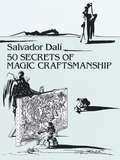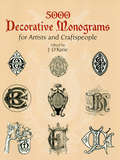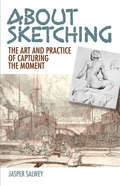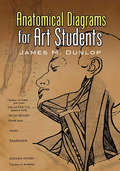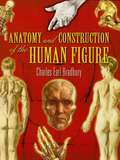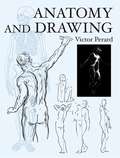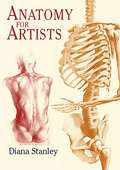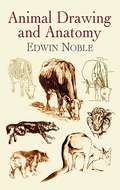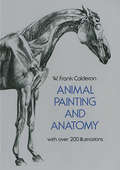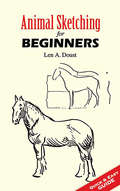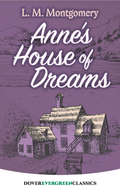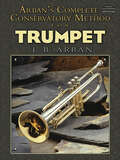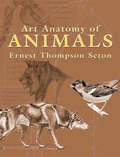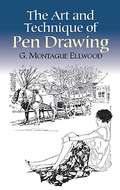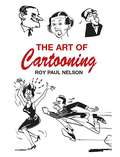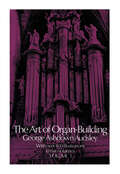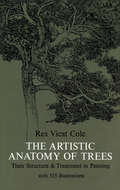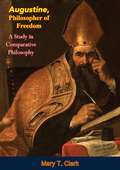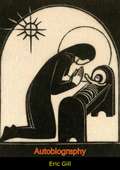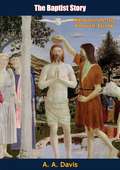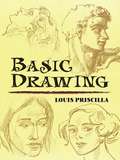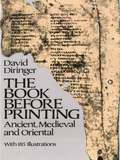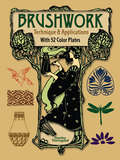- Table View
- List View
College Success
by Bruce Beiderwell Linda Tse Thomas J. Lochhaas Nicholas B. DekanterCollege Success takes a fresh look at what it means, in today's world, with today's students, to be successful in college. Although many of the topics included--from study skills to personal health, from test-taking to managing time and money--will look familiar to those who have used student success texts that have been around for many editions, College Success takes a new approach. The focus is on realistic, practical tools for the students who need them. This is a book designed, frankly, for students who may have difficulty with traditional college texts. The style is direct and to the point. Information is presented concisely and as simply as possible. This is not a weighty tome that discusses student success--this is a manual for doing it. College student demographics have changed considerably in recent decades. More than a third of all students enroll not directly from high school but after a delay of some years. More students are working and have families. More students come from varied ethnic and cultural backgrounds. More students are the first in their family to attend college. More students have grown up with electronic media and now read and think in ways different from the previous generation. With these and so many other cultural changes, more students are not well prepared for a college education with the study skills and life skills they need to become successful students. For each student to get the most out of College Success and their college experience they must understand who they are as it relates to college. To that end, in every chapter students explore themselves, because success starts with recognizing your own strengths and weaknesses. Students make their own goals based on this self-assessment, determining what success in college really means for them as individuals. Interactive activities then help students learn the choices available to them and the possibilities for improving their skills. Skills are presented in step-by-step processes, tips for success in manageable highlighted displays. Most important, students always see the value of what they are reading--and how they can begin to apply it immediately in their own lives. College Success is intended for use in Freshmen Orientation, Study Skills or Student Success courses. A 2009 study revealed that currently nationwide, 34% of college freshmen do not return to their college for their sophomore year. This book is designed to help change that.
50 Secrets of Magic Craftsmanship (Dover Fine Art, History of Art)
by Salvador DaliFor many, Salvador Dalí (1904–1989) represents the Surrealist painter par excellence, one whose work explored his own dream life, hallucinations, and fetishes in the process of objectifying the irrational elements of the unconscious. In this rare and important volume, the painter expresses (in his inimitably eccentric fashion) his ideas of what painting should be, expounds on what is good and bad painting, offers opinions on the merits of Vermeer, Picasso, Cézanne, and other artists, and expresses his thoughts on the history of painting. In a blend of outrageous egotism and unconventional humor, Dalí presents 50 "secrets" for mastering the art of painting: "the secret of sleeping while awake," "the secret of the periods of carnal abstinence and indulgence to be observed by the painter," "the secret of the painter's pointed mustaches," "the secret of learning to paint before knowing how to draw," "the secret of the painter's marriage," "the secret of the reason why a great draughtsman should draw while completely naked," and many other Daliesque prescriptions for artistic success.Illustrated with the artist's own drawings, this volume is a fascinating mixture of serious artistic advice, lively personal anecdotes, and academic craftsmanship. It is, according to the San Francisco Chronicle, "in lay-out and clarity of design . . . a remarkable work of art in itself." Especially esteemed for its insights into modern art, 50 Secrets of Magic Craftsmanship is indispensable reading for any student of Surrealism or 20th century painting.
5000 Decorative Monograms for Artists and Craftspeople
by J. O'KaneVoluminous, diversified collection of ornamental two-, three-, and four-letter combinations -- all in a rich variety of styles. Arranged alphabetically in columns, each series is grouped under an appropriate head. Crowns, coronets, and many ancient and modern alphabets are displayed, making this comprehensive sourcebook of permission-free designs indispensable. 130 black-and-white plates.
About Sketching: The Art and Practice of Capturing the Moment
by Jasper Salwey Leonard SquirrellWritten as a sketching artist's companion, this guide by a noted author of art instruction manuals attests to the value of sketching as a distinct art form rather than merely a vehicle to achieve more polished works. Artist and author Jasper Salwey details advantages of many drawing media, from pencil to watercolor, and their application to depictions of interior studies, figures, landscapes, seascapes, and architecture.Suitable for artists and students of moderate to advanced skills, the book makes a case for why the artist needs to sketch and the importance of sketching to the history of art. Salwey's advice and insights are illustrated by relevant examples that range from works by the Old Masters to those of his great contemporaries, including Frank Brangwyn, Dame Laura Knight, and John Singer Sargent.
Anatomical Diagrams for Art Students
by James M. DunlopAny artist wishing to practice figure drawing or to understand the body's movement will do well to study the interaction of muscles with bone structure. This timeless introduction to human anatomy combines art and science, focusing on realistic depictions of the skeleton's impact on the external form and the attachments of the muscular system.More than 70 black-and-white illustrations show the positions and names of muscles and bones. Clear and accurate, the diagrams cover everything from the bones and muscles in the neck, head, trunk, limbs, hand, and foot to details of the face. Artists at every level of experience will find this volume an indispensable reference.
Anatomy and Construction of the Human Figure
by Charles Earl BradburyTo draw or paint human figures truly, an artist must have as much understanding of bones and muscles as of form. This beautiful guide by a respected artist and teacher provides that knowledge. Realistic plates of bones and muscles show form and function, while full-color images make graphic distinctions between bone, muscle, and tendon. Drawings throughout the book emphasize fundamentals of anatomy and show simple methods of building the forms.Author Charles Earl Bradbury (1888-1967) takes a two-part approach in this book. The first part features a self-contained treatment of the bones of the skeleton and how they relate to the body's outline and muscle masses. The second focuses on muscles and their actions, showing how they are constructed and how they look in the human form. Male and female structures are compared and contrasted throughout the text. Designed specifically for classroom use, this volume is also a priceless reference.
Anatomy and Drawing
by Victor PerardThis instructive book presents excellent annotated line drawings of anatomical structure for the beginning artist. Explaining the subject in simple terms and with an extensive series of dynamic illustrations, the author identifies parts of the body and demonstrates a wide array of physical activities through his sketches. Following notes on proportion and drawing, chapters cover the human skeleton, head and neck, torso, arm, hand, leg, foot, and musculature. Numerous illustrations depict various views of these structures, movements of the human figure, as well as changes in the relative proportions of features at different ages. One of the best books in its field, Anatomy and Drawing helps demystify a complex subject by enabling students to visualize the muscles and bones under the skin, and covers just about everything a beginner needs to know about drawing the human anatomy.
Anatomy for Artists
by Diana StanleyConcise and uniquely organized, this outstanding guide teaches the essentials of anatomical rendering. Author Diana Stanley presents numerous illustrations and instructions covering the key aspects of anatomy, without the distractions of unnecessarily extensive technical details that many art students find discouraging. Four major sections constitute the book, with studies of the trunk, the head and neck, the upper limb, and the lower limb. Each section features full coverage of the skeleton, the muscles, and their surface forms. The emphasis throughout is on relating anatomical structure to the actual surface appearance of the body, both at rest and in motion. Sixty-four exceptionally clear and instructive illustrations include diagrams of skeleton and muscle structure, as well as superb examples of figure drawing. This affordably priced and easy-to-reference manual represents an invaluable addition to the library of every artist -- student and professional.
Animal Drawing and Anatomy
by Edwin Noble"No artist, designer, or craftsman can be regarded as fully equipped without a knowledge of natural forms," asserts this instructive volume. "All forms of life offer rich material for design, whether realistic or conventional," it notes, adding that studies from life "of the human figure, the forms of all animals and birds, and of the inhabitants of the waters, and of plants, must precede mastery of the art of design." With this profusely illustrated guide, beginners can learn the fundamentals of animal drawing, and more experienced artists can find tips that will assist them in refining their skills. Written and illustrated by a distinguished artist and art instructor of the early twentieth century, this volume features valuable insights into reproducing accurate images of horses, cows, dogs, sheep, birds, and wild animals. The explanatory text, highlighted by 233 drawings, offers advice not only on depicting musculature, hair, feathers, and other obvious physical features, but also on such essentials as action, pose, proportions, and character.
Animal Painting and Anatomy
by W. Frank CalderonDrawing is "the very essence of all pictorial art," and this book approaches the challenging art of animal painting from the point of view of accurate representation of animal subjects on canvas. Combining useful information on important anatomical features with direction on how to handle the subjects and how to express their forms and postures, the author has produced a complete, inexpensive, at-home course in animal painting and anatomy.All aspects of animal drawing and painting are covered: drawing from life; anatomy in relation to drawing (not surgical anatomy, but a precise knowledge of the visible structure and movements of animals); characteristic movements of animals and suggestions on how to capture them in your picture; composition (design, restraint, rhythm, balance of light and shade, relative scale of animals and landscape, foregrounds); painting and color. 36 illustrations, mostly sketches by the author, depict horses, pigs, cows, dogs, and other animals in various life positions and movements. A long, detailed discussion of the anatomy of animals completes the book. Here Mr. Calderon describes all the structures of animals that are of significance to the artist: the vertebral skeleton, the bones and muscles of the head, the muscles of the vertebral skeleton, the fore-limb and its muscles, the muscles attaching the shoulder blade to the trunk, and the bones and muscles of the hind limb. 208 drawings accompany these discussions and show you how anatomy is related to surface contours and techniques of shading.
Animal Sketching for Beginners
by Len A. DoustThis handy manual provides the confidence, insight, and guidance to help any sketcher create realistic animal drawings. With the help of the author's thirty-one clearly detailed drawings, this basic how-to-guide:* illustrates major attributes shared by many animals* shows how simple shapes can create complex drawings* functions as a valuable anatomy referenceA source of inspiration for artists at all levels, this book will be especially helpful to beginning art students.
Anne's House of Dreams: Annotated Edition (Dover Children's Evergreen Classics #5)
by L. M. MontgomeryIn this fifth book of the Anne of Green Gables series, our red-haired heroine finally marries her childhood sweetheart and true love, Gilbert Blythe. After a ceremony in the sunshine of the old orchard at Green Gables, surrounded by the loving faces of long-familiar friends, the young doctor and his bride set off for the mist-shrouded shores of Four Winds Harbor.The newlyweds settle in a quaint fishing village, where their snug home offers views of the sea from every window. The new setting provides a fresh opportunity for Anne to discover kindred spirits: lighthouse keeper Captain Jim, teller of enchanting tales; bitter-tongued but kind-hearted Miss Cornelia, who bears an enduring grudge against men and Methodists; fascinating Leslie Moore, trapped in a loveless marriage, who envies and admires Anne; and writer Owen Ford, who seeks inspiration for his great Canadian novel. Poignant, romantic, and brimming with old-fashioned charm, Anne's House of Dreams traces the beloved heroine's path to maturity.
Arban's Complete Conservatory Method for Trumpet (Dover Books on Music)
by Jb Arban"The trumpeter's bible" for over 150 years, this complete pedagogical method contains hundreds of exercises, beginning with basics and progressing to advanced compositions, including the author's famous arrangement of Carnival in Venice. J. B. Arban discusses every aspect of playing — including articulation, tonguing, slurs, tone, and range — sharing the knowledge he acquired from many years of experience as a teacher and performer. He offers an appreciation of all the instrument's inherent difficulties as well as instructive points that touch upon all possible musical questions.The Paris Conservatory's Committee on Music Study noted, "This work is rich in instructive advice, is based upon the best of fundamental principles, and omits not a single instructive point which might be needed for the development and gradual technical perfection of a player." This edition features an Introduction and expert commentary by an instructor well versed in the Arban Method.
Art Anatomy of Animals
by Ernest Thompson SetonA prolific author of books on wildlife, the great naturalist Ernest Thompson Seton was also an accomplished illustrator. Noting a dearth of general zoological anatomies for artists, he took it upon himself to create one. This volume is the result of his efforts. In it, he provides a definitive artist's-eye view of the exterior anatomy of animals, helping readers depict surface features such as hair or fur, as well as basic body and facial structures.Chapters cover a number of domesticated and wild species: the anatomy, size, and proportion of the lion, tiger, leopard, and other members of the cat family; bears (including the grizzly, European brown, American black, and the polar bear); as well as the camel, Indian elephant, and the caribou. Additional sections consider the horse in motion, the gallop of a dog, and bird feathering.One of the most widely consulted books on the subject, Art Anatomy of Animals will be a valuable addition to the libraries of both instructors and students of art.
The Art and Technique of Pen Drawing
by G. Montague EllwoodA practical course in pen and ink drawing, this helpful guide includes a comprehensive survey of the best pen work in existence. A wide diversity of styles are presented - from loose sketches to rich, engraving-like studies. Works from all periods include drawings by such masters as Dürer, Holbein, Doré, Gibson, Rackham, Pyle, Beardsley, and Klinger. An opening chapter presents the evolution of pen drawing, while subsequent sections allow readers to select topics in self-contained units on line technique; the use of materials, drawing the figure, face and hands; humorous illustration; pen drawing for advertisers; fashion drawing; and landscape and architectural illustration. An excellent reference for students, this book will also help illustrators and commercial artists further develop their own styles.
The Art of Cartooning
by Roy Paul NelsonWith a little outside help, says veteran cartoonist Roy Paul Nelson, anyone with an interest in art can learn to draw humorous sketches. He proves it in this accessible guide to cartooning, offering beginners and professionals a complete manual for working in one of the world's liveliest art forms. Briefly tracing the origins of cartooning, Nelson goes on to furnish tips for using proper tools and techniques; drawing the human figure, animals, and backgrounds; composing; doing gag cartoons, comic strips, and panels; creating editorial and advertising cartoons; and much more. Accompanying the easy-to-follow directions are seventy-five illustrations, including many of the author's own. Designed especially for novices, this concise, readable guide will also serve as a refresher course for seasoned artists.
The Art of Organ Building
by George Ashdown AudsleyVolume 1 of the fullest repository on organ building and history in English language. Includes outline of organ history, external design and decoration, internal arrangement and mechanical systems, acoustics and theories of sound-production in organ pipes, tonal structure and appointment, compound stops of the organ, more. Complete with illustrations, tables, and specifications. "the most significant republication in our field for the past twenty years . . . an incomparable, invaluable book." -- American Guild of Organists Quarterly.
The Artistic Anatomy of Trees
by Rex V. ColeFor years greatly admired and widely used, this excellent text by one of Britain's foremost art instructors has achieved the status of a classic in its field. The author, also a noted landscape painter, offers complete and accurate instruction in painting and drawing trees to all serious artists — beginner or advanced, amateur or professional. Its extremely comprehensive and detailed coverage has earned this volume a permanent place in the libraries of landscape painters, students, and teachers. Every aspect of trees and how to depict them — in any style — is covered with unusual clarity and precision; problems of balancing tree groups, relations of light and shade, delicacy and weight, distance, sky apertures and their patterns, curves and straight lines in tree branches, tree color, the influence of special environmental factors (age, frost and snow, wind, moonlight), the effects of bud arrangements on the anatomy of trees, etc. Of special value is the very thorough and lucid analysis of tree anatomy: the proportion of boughs, branches, and twigs; the positioning of leaves on twigs; the form, texture, and color of leaves; leaf patterns; flower arrangement; stipules, bracts, buds, scales, spines, seedlings, the bark, and all the other essential details of structure. Specific information is given for each tree discussed: oaks, sycamores, willows, pines, maples, etc.; abstract and inaccurate generalizations are avoided. Nearly 500 illustrations by the author accompany the text, demonstrating all the anatomical features discussed. In addition, there are 48 full-page plates: magnificent landscape paintings and drawings by Giorgione, Rubens, Rembrandt, Van der Neer, Watteau, Hobbema, Turner, Gainsborough, Dupré, and many others, showing their compositional use of trees, their details in rendering, and similar material.
Augustine, Philosopher of Freedom: A Study in Comparative Philosophy
by Mary ClarkThe riches of our Christian tradition need to be mined anew for each generation. Accordingly, Mother Clark’s book is destined to make the treasures of Augustine’s thought accessible to the student and to the average reader. Contributing to a clearer, more complete understanding of Augustine, Mother Clark considers her subject in the light of a single, basic principal: the idea of freedom. Augustine himself is allowed in this book to speak out on a topic so appropriate to the world today. Freedom, exploited by Existentialists, denied by Totalitarians, was appreciated properly by St. Augustine. Here is a book calculated to put in bold relief the timelessness of Augustine’s genius and to explain to modern man the truths he needs most: the meaning of God and the meaning of man.
Autobiography: A Working Philosophy
by Eric GillERIC GILL’s iconoclastic ideas on modern civilization, art, sex, and life generally, drop like bombshells from the pages of this account of his search for “The City of God.”Completely devoid of social or professional ambition and detesting material success, this artist of the first order preferred to live the simple life of a stone cutter and craftsman.Richly illustrated with 36 gravure reproductions of the author’s most outstanding work.
The Baptist Story: Sermons on the Trail of Blood
by A. A. Davis M. J. LeeThe Baptist Story is a story of struggle and triumph, victory and heartbreak. There have always existed, although sometimes in the most remote regions, those who sought to maintain pure New Testament practice in the face of all adversity. These believers were a simple people who led a simple life, and who sought to adhere to the simple, primitive practices of the New Testament. For their adherence to the simple truths of God’s precious Word, these Godly saints suffered banishment, imprisonment, persecution, some even suffering death by fire and sword. Their persecutions were sanctioned by the pagan religious establishments of that day. But these saints endured because “they loved not their lives unto the death.” They counted the truth of God’s Word more precious than family, friends, and their very lives.This excellent work, which is a series of sermons based upon The Trail of Blood by the revered J. M. Carroll, presents in a simple, enlightening, and easy to read fashion, the story of these precious souls who lived pure lives and died for the simple truths which are often taken advantage of today.Baptists of today need to become more aware of the struggles borne by their forefathers and the premium price paid for the maintenance of New Testament truth. Just as we owe the military soldiers a debt for the sacrifices they have made for the cause of personal freedom, so we owe an even greater debt to the soldiers of the cross who suffered and gave their lives to secure our religious freedom, which is taken for granted today.We present this book with the hope that it will be used to make God’s people aware of their glorious past. We pray that the all-wise God will see fit to use this work to once again enlighten His people and to give them the courage to stand for the truths contained in His precious Word.
Basic Drawing
by Louis PriscillaUnique in its presentation, Basic Drawing teaches by example. Through a profusion of self-explanatory drawings, simple rules of procedure are expertly illustrated for artists, enabling them to build a solid foundation in all aspects of art composition.Presenting informative facts rather than ideology, the author begins with perspective and progresses to the figure in movement; light and shade; and detailed anatomy such as the head, neck, facial features, back, hips, legs, feet, arms, and hands. Using hundreds of masterful illustrations from his own portfolio, Priscilla continues with drapery, composition, and trees and landscape, including outdoor sketching. A truly all-in-one manual that belongs on every artist's bookshelf, Basic Drawing outlines the fundamental skills of drawing with an effective and powerful simplicity.
Beginner's Guide to Perspective
by Victor PerardPerspective is one of the most difficult skills to master--even for seasoned artists. In this book, distinguished artist and art educator Victor Perard shows clearly how the use of such simple techniques as vanishing points and perspective lines can add a dramatic depth and dimension to any drawing.Sixty-two accompanying illustrations have been chosen to demonstrate a variety of problems the artist may encounter when creating a picture. Perard urges students to study them carefully and then apply the principles they represent when making their own sketches. He also provides some striking, illustrated studies in foreshortening and two-point perspective.
The Book Before Printing: Ancient, Medieval and Oriental
by David DiringerIt is probable that the earliest "books" were written on wood or leaves as early as the fourth millennium B.C. These fragile materials, unfortunately, have not come down to us. In their absence, the earliest surviving books are the clay tablets of Mesopotamia, the oldest attributed to c. 3500 B.C. On these ancient clay shards, dense rows of cuneiform script record the seminal writings of mankind: the Gilgamesh epic, Sumerian literary catalogues, Babylonian astrology, Assyrian accounts of the Creation and the Flood, and the Lipit-Ishtar Law-Code (c. 2000 B.C.), predating Hammurabi and the oldest law code in human history.Probably as ancient as the Mesopotamian writings, or nearly so, are Egyptian hieroglyphics. In a sense, it is the papyrus scrolls of the Egyptians -- preserved by that country's hot, dry climate -- that represent the true ancestors of the modern book. As the centuries passed, papyrus slowly gave way to parchment (the prepared skins of animals) as writing material. Indeed, the handwritten parchment or vellum codex is "the book" par excellence of the Middle Ages. Western European book production is only part of the story, and the author is at pains to illuminate the bibliographic contributions of numerous peoples and cultures: Greek and Roman book production, books made in central and southern Asia, the books of Africa, pre-Columbian America, and the Far East -- material that is often not mentioned in Western histories of the book.Based on years of painstaking research and incorporating a wealth of new material and conclusions, the text is enhanced throughout by abundant illustrations -- nearly 200 photographic facsimiles of priceless manuscripts in museums and libraries around the world.
Brushwork Technique and Applications: With 52 Color Plates (Dover Art Instruction Ser.)
by Stanley ThorogoodThis handbook and teacher's guide by a noted instructor presents a wealth of annotated illustrations that introduce practice brushstrokes and designs. In addition to instructions on color mixing, paper selection, and proper brush handling, the book features 52 full-color plates. The vibrant illustrations, which also serve as repetition exercises for aspiring pottery artists, incorporate elements of Art Nouveau decor as well as Etruscan and Hispano-Moresque ornaments.Stanley Thorogood discusses and depicts various brush strokes, including blob work applied to pattern-making, the formation of patterns from simple strokes, the principle of radiation, and natural and conventional forms drawn with the brush. He further explores the use of the brush in suggesting ideas, the decoration of vase forms, direct freehand drawing and application, and direct designing on given lines. Additional topics include sketching directly from plant life and historic brushwork.

